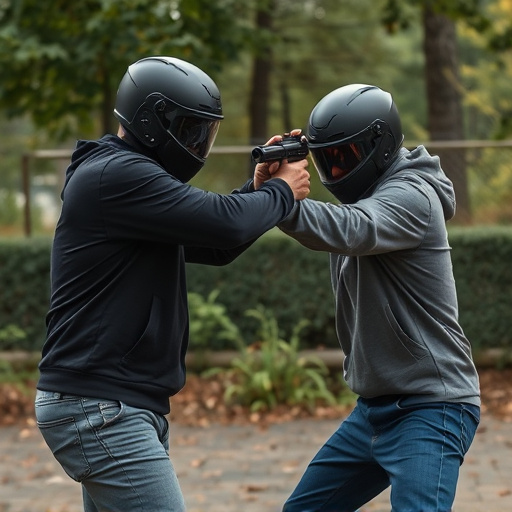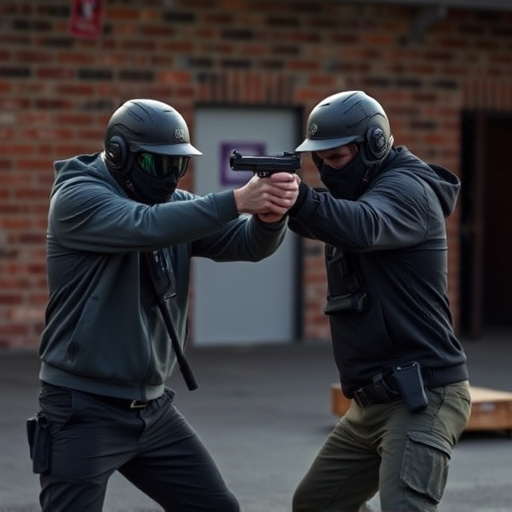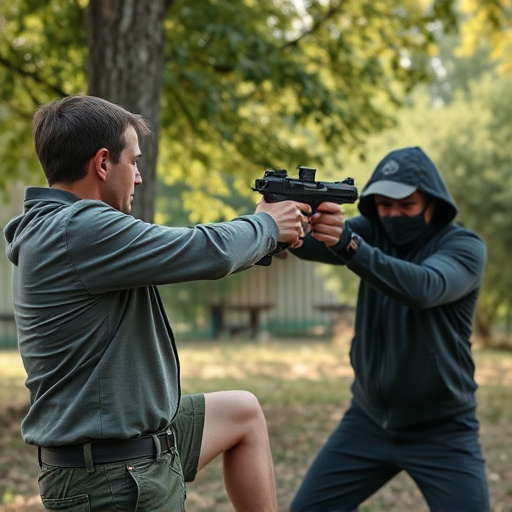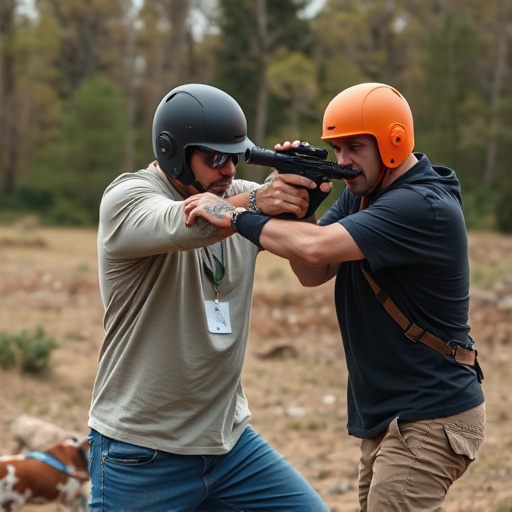Tactical stun guns with LED flashlights provide enhanced visibility and a tactical advantage in low-light environments, offering control and de-escalation tools for law enforcement and personal security in challenging lighting conditions. CEWs like these are popular alternatives to firearms due to their controlled incapacitation without permanent damage, though legality varies by jurisdiction.
“In the realm of personal defense, Tasers and stun guns stand out as game-changers. This article peels back the layers on these powerful tools, offering a comprehensive guide for users seeking effective protection.
First, we demystify Tasers, exploring their unique function and diverse applications in law enforcement and civilian contexts. Next, we delve into stun guns, shedding light on their features and legal considerations. Finally, we highlight the tactical advantage of LED flashlight integration in modern stun guns, enhancing visibility and defense.”
- Understanding Tasers: Function and Applications
- Stun Guns: Features and Legal Considerations
- Tactical Advantages: LED Flashlight Integration
Understanding Tasers: Function and Applications

Tasers, officially known as Conducted Electrical Weapons (CEW), are devices designed to temporarily incapacitate a target through the delivery of electric current. Unlike traditional stun guns that rely on high voltage and low amperage to disrupt muscle control, tasers use lower voltage but higher amperage pulses, typically delivered in quick bursts. This technology allows for more controlled and effective neutralization without causing permanent damage.
Tasers find applications both in law enforcement and private security sectors. Law enforcement officers often carry tactical stun guns with LED flashlights as a non-lethal force option during high-risk situations or when dealing with resistant individuals. Their effectiveness has made them popular alternatives to traditional firearms, especially in crowd control scenarios and for de-escalating tense encounters. The versatility of tasers, combined with their ability to render a subject temporarily immobile, makes them valuable tools in various security and self-defense contexts.
Stun Guns: Features and Legal Considerations

Stun guns, also known as electroshock weapons, are designed to immobilize targets through electric current. Unlike tasers, which fire probes into the target’s body to deliver a high-voltage pulse, stun guns use conductive surfaces to emit an electrical discharge. This typically involves a pair of metal prongs or plates that make contact with the target, delivering a powerful jolt. Stun guns are often equipped with tactical features like LED flashlights for enhanced visibility during low-light situations.
From a legal perspective, stun guns are subject to varying regulations depending on jurisdiction. Many regions differentiate between stun guns and tasers in terms of power output and use. High-power stun guns, capable of delivering more intense shocks, might be restricted for law enforcement or personal defense purposes. Users must familiarize themselves with local laws and obtain necessary permits to legally carry and use a stun gun, especially when operating in public spaces.
Tactical Advantages: LED Flashlight Integration

One notable distinction between a Taser and a stun gun lies in their tactical advantages, particularly when it comes to lighting. A tactical stun gun with an integrated LED flashlight offers a significant edge in low-light or dark environments. This combined feature allows users to illuminate areas while also disabling attackers, providing a crucial advantage during night operations or in enclosed spaces where visibility is limited.
The LED flashlight not only enhances situational awareness but also serves as a distraction, momentarily blinding an assailant and creating an opening for the user to escape or defend themselves. This dual functionality makes tactical stun guns with LED flashlights versatile tools, especially for law enforcement officers and individuals seeking enhanced personal security in challenging lighting conditions.
In comparing tasers and stun guns, understanding their unique features is key. Tasers, with their electroshock technology, offer a non-lethal force option for law enforcement and self-defense. Stun guns, on the other hand, utilize high-voltage electrical pulses to incapacitate temporarily. When considering a tactical solution, integrating an LED flashlight into your stun gun can provide enhanced visibility in low-light scenarios, making it a versatile tool for various situations. For personal safety and strategic advantages, a tactical stun gun with LED flashlight combines powerful features for effective protection.
